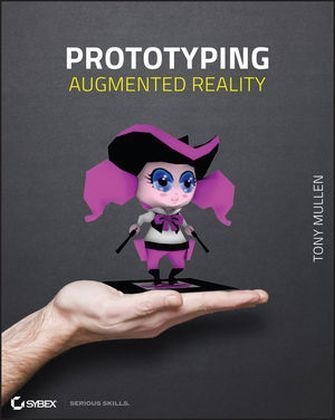
Prototyping Augmented Reality
John Wiley & Sons Inc (Verlag)
978-1-118-03663-1 (ISBN)
- Titel ist leider vergriffen;
keine Neuauflage - Artikel merken
Learn to create augmented reality apps using Processing open-source programming language Augmented reality (AR) is used all over, and you may not even realize it. Smartphones overlay data onto live camera views to show homes for sale, restaurants, or historical sites. American football broadcasts use AR to show the invisible first-down line on the field to TV viewers. Nike and Budweiser, among others, have used AR in ads. Now, you can learn to create AR prototypes using 3D data, Processing open-source programming language, and other languages. This unique book is an easy-to-follow guide on how to do it.
* Guides you through the emerging technology of Augmented Reality (AR) * Shows you how to use 3D data with the Processing programming environment and other languages to create AR prototypes for the web, smartphones, Macs, and PCs * Helps 3D artists and designers who want to move into the AR market but don't have programming skills * Covers the essentials of 3D programming, creating objects for an AR library, building and exporting 3D models, and much more * Explains how to interactively link 3D to physical, virtual, and streaming environments Author Tony Mullen is both an artist and a programmer and perfectly suited to explain how to bridge these two worlds, as he so deftly does in Prototyping with Augmented Reality.
Tony Mullen, PhD, has a broad background in CG and programming. He teaches at Tsuda College in Tokyo, Japan, where his courses include Python programming, 3D modeling, and animation. He is the author of Introducing Character Animation with Blender, 3D for iPhone Apps with Blender and SIO2, Mastering Blender, and Bounce, Tumble, and Splash!: Simulating the Physical World with Blender 3D, all from Sybex.
Introduction xix Chapter 1 Getting Started with Augmented Reality 1 What Is Augmented Reality? 2 Tools and Technologies 6 AR Necessities 7 Chapter 2 Introduction to Processing 13 The Processing Programming Environment 14 Drawing in Processing 19 Working with Classes 25 Chapter 3 Blender Modeling and Texturing Basics 33 Modeling with Blender 34 Baking a Smooth AO Texture 54 Creating a Finished Texture with GIMP 59 Chapter 4 Creating a Low-Poly Animated Character 69 Texturing Your Low-Poly Alien 70 Rigging the Model 75 Keying a Simple Walk Cycle 79 Chapter 5 3D Programming in Processing 87 The P3D and OpenGL Environments 88 Working with OBJ files 92 Simple Animation with OBJ Arrays 98 Chapter 6 Augmented Reality with Processing 103 The NyAR4psg Library 104 Digging into the Sample Code 107 Controlling Transformations with Multiple Markers 112 Chapter 7 Interacting with the Physical World 121 Physical Computing with Arduino 122 Sensors and Circuits 125 Communicating Between Arduino and Processing 127 Chapter 8 Browser-Based AR with ActionScript and FLARManager 135 The FLARManager AR Toolset for ActionScript 136 Getting FLARManager Up and Running 137 Creating Your Own Projects 147 Chapter 9 Prototyping AR with jMonkeyEngine 165 Introducing JMonkeyEngine and ARMonkeyKit 166 Exploring ARMonkeyKit 174 Thoughts from the Developer 184 Chapter 10 Setting Up NyARToolkit for Android 189 Android and the Android SDK 190 NyARToolkit for Android 196 Going Further with Android 202 Appendix A From Blender 2.49 to Blender 2.58 207 Basics and Views 208 Mesh Modeling 211 Texturing, Baking, and Materials 213 Rigging and Animation 216 Appendix B File Formats and Exporting 221 Development Environments and File Formats 222 Exporting from Blender 223 Index 233
| Verlagsort | New York |
|---|---|
| Sprache | englisch |
| Maße | 186 x 233 mm |
| Gewicht | 548 g |
| Themenwelt | Kunst / Musik / Theater |
| Informatik ► Grafik / Design ► Digitale Bildverarbeitung | |
| Informatik ► Office Programme ► Outlook | |
| ISBN-10 | 1-118-03663-8 / 1118036638 |
| ISBN-13 | 978-1-118-03663-1 / 9781118036631 |
| Zustand | Neuware |
| Haben Sie eine Frage zum Produkt? |
aus dem Bereich


